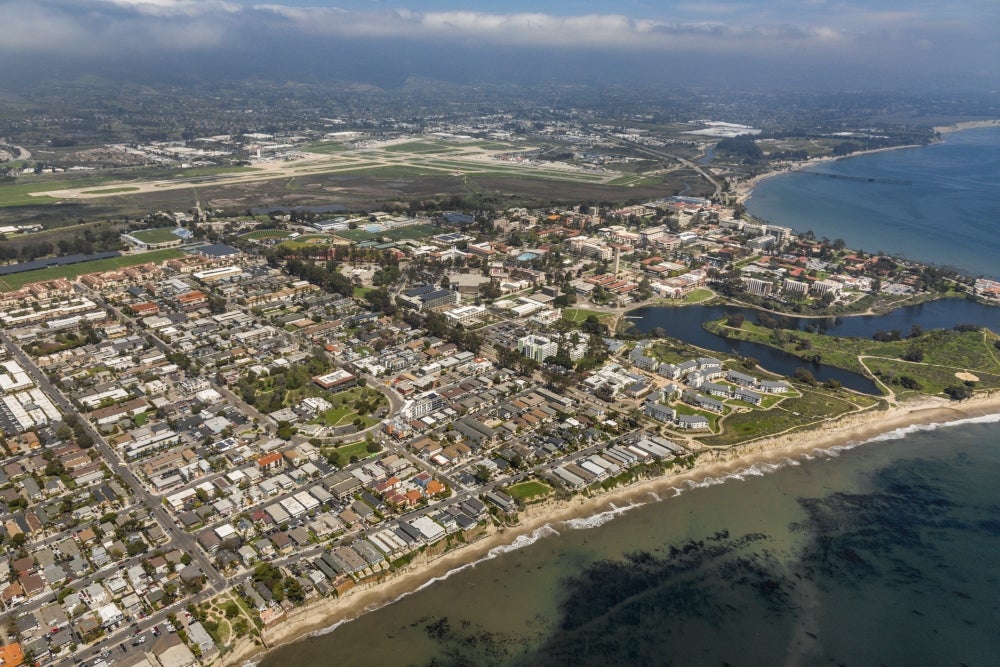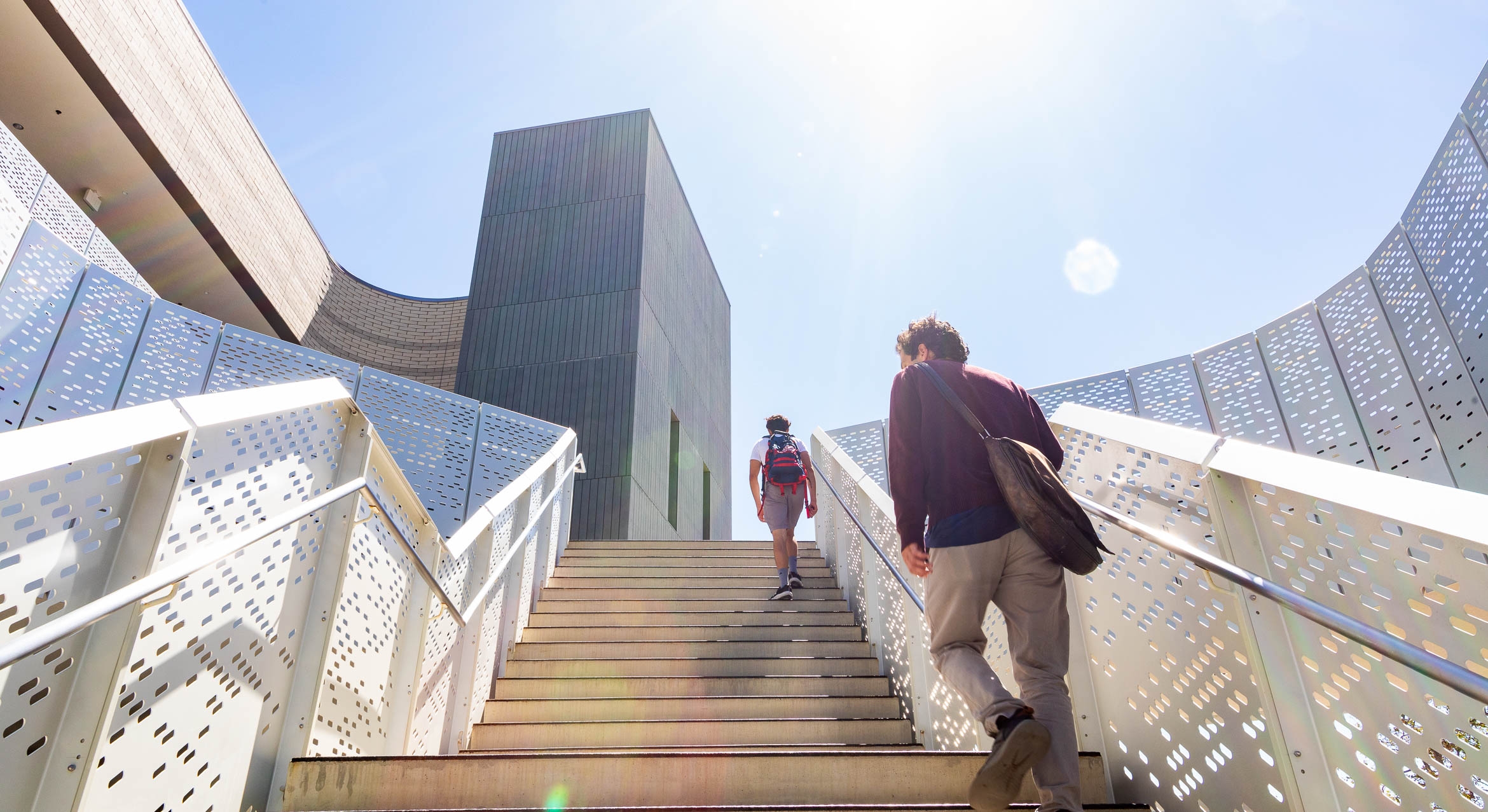
On Home Ground
Housing that’s not only more affordable, but also within walking distance of work? Such a plum rarity will one day be reality for some staff and faculty members of UC Santa Barbara, courtesy of a dedicated housing development planned adjacent to the campus.
With completion of the Ocean Walk faculty housing development at North Campus now in sight, the nascent Ocean Road project — approved as part of UC Santa Barbara’s Long-Range Development Plan (LRDP) — has moved from the backburner closer to the front. Providing workforce housing is a component of the LRDP; doing so at below-market rates is a university priority.
Situated along the Ocean Road corridor that runs between Isla Vista and the campus, the new project will ultimately provide up to 540 units — some for rent, some for sale — for UCSB staff and faculty, with a “substantial portion” reserved for the former, according to Joel Michaelsen, faculty advisor in finance and resource management. The 16-acre parcel extends from El Colegio Road to the coastline, parallel to an old windbreak once known as the “eucalyptus curtain.”
“The biggest benefit and our most important objective with the Ocean Road project will be to provide attractive, functional, affordable housing for a portion of our workforce — that has to be the foremost goal,” Michaelsen said. “Additional benefits will arise from having a resident population both in terms of campus activity and Isla Vista, and from taking cars off the freeway in terms of emissions, smog, congestion and that sort of thing. Those are the primary benefits. And if we do it right it’s something that can ultimately be done at low or no cost to the campus.”
By using third-party developers, UC Santa Barbara won’t pay out of pocket for design, construction, financing, or operations and maintenance. Such costs are largely assumed by the developer(s), who make money on unit rentals or sales and pay the university, essentially, for using the space. The approach has proved successful at the North Campus faculty development, according to Michaelsen.
As proposed, the new project calls for a new neighborhood that would redefine the border between Isla Vista and the campus and create a varied façade along the 12 blocks of Ocean Road. The buildings could provide finished ends for the blocks of Isla Vista leading to campus, and create a series of gateways between the community and campus.
Until a developer is selected, the site design is relatively fluid; however, the current design strategy would transform Ocean Road into a two-lane street with wide sidewalks, bicycle lanes and connections to Isla Vista for pedestrians, vehicles and bicycles. Re-envisioned as a lively, urban street, the project is meant, in part, to foster better integration with Isla Vista.
“Imagine a resident population of adults on campus, adjacent to Isla Vista, 12 months per year,” Michaelsen said. “It’s really going to transform certainly the nature of the campus, and also Isla Vista. And it will have a beneficial impact on the staff and faculty that are able to get in there, many of who currently spend a lot of time going back and forth to work from Lompoc, Santa Ynez Valley, Ventura and other places.”
Curtailed commutes for many of the development’s eventual residents are among the project’s myriad sustainability benefits. Less driving will reduce the individual carbon footprints of those employees, and take cars off the roads and freeways, thereby cutting traffic congestion and emissions. It could also mean fewer cars coming on to campus and a boost in greener transportation alternatives.
“It’s worth noting all the efforts, from the UC Office of the President down through the campuses, to achieve carbon neutrality in campus operations,” Michaelsen said. “This project may only go a short way toward addressing that overall goal, but it will be a significant impact — on traffic in particular. You take 500 cars off the road during rush hour anywhere, that’s going to have an impact.”
The development itself will be constructed in accordance with LEED (Leadership in Energy and Environmental Design) green building standards — a requirement that will be included in requests-for-proposals to developers — according to Daniel Sweeney, director of real estate services in UCSB’s Office of Budget and Planning. And, per a recently approved state mandate that goes into effect in 2020, it will be equipped with rooftop solar panels.
Community engagement, by way of meetings and design charrettes, was central to the original proposal and project approval. As this new process evolves, input from people both on and off campus will again be crucial, and multiple opportunities for such public discussions will be provided and welcomed every step of the way.
To that end, a campus-based project committee will launch a survey among staff and faculty to gauge demand both for the units and for potential retail space as a component of the development. The campus also will reach out to community groups, merchants and local government agencies to “give them forums to be heard and to ask for their input,” Michaelsen noted.
Work will soon be underway to prepare an updated environmental impact report for the project (an initial study was conducted in 2008). Once completed — Sweeney estimated it could take 6-9 months — the report is subject to public review and comment.
“That will provide a key public interaction around the project,” Sweeney said. “The primary objective is to provide affordable workforce housing for faculty and staff, and another big goal is to enhance and increase integration with Isla Vista. That would include promoting some demographic diversity in that area, providing some supporting retail space for the housing and, to the extent that we can, making for a better, more seamless connection between campus and Isla Vista.”



